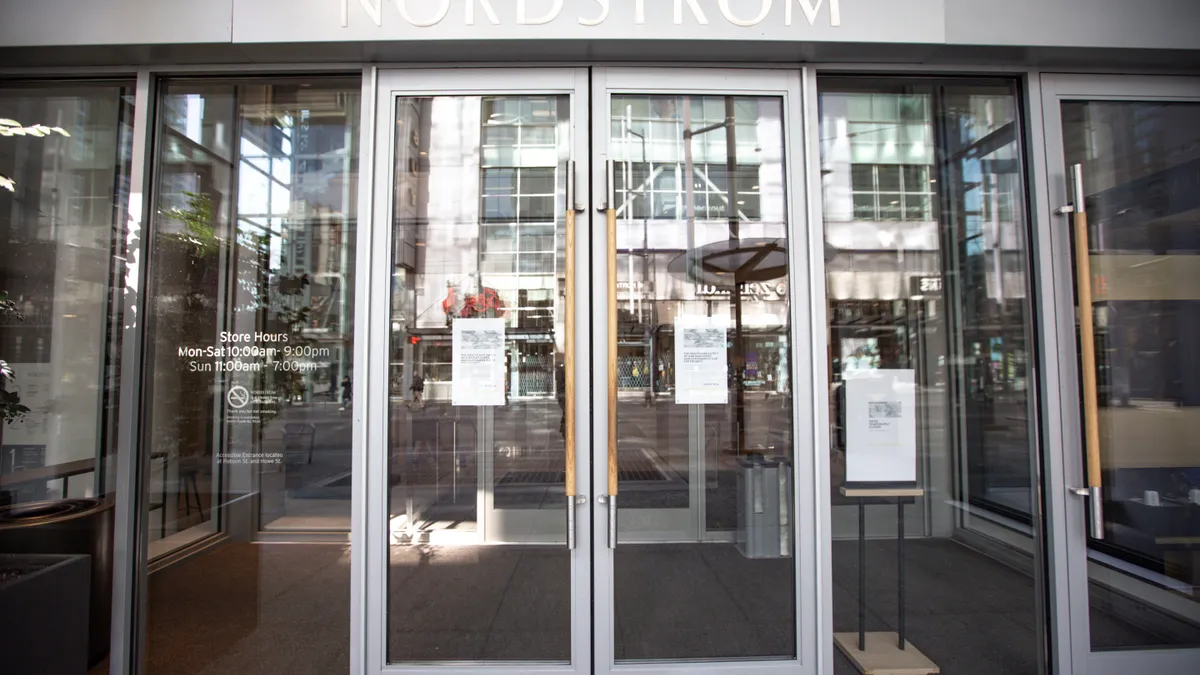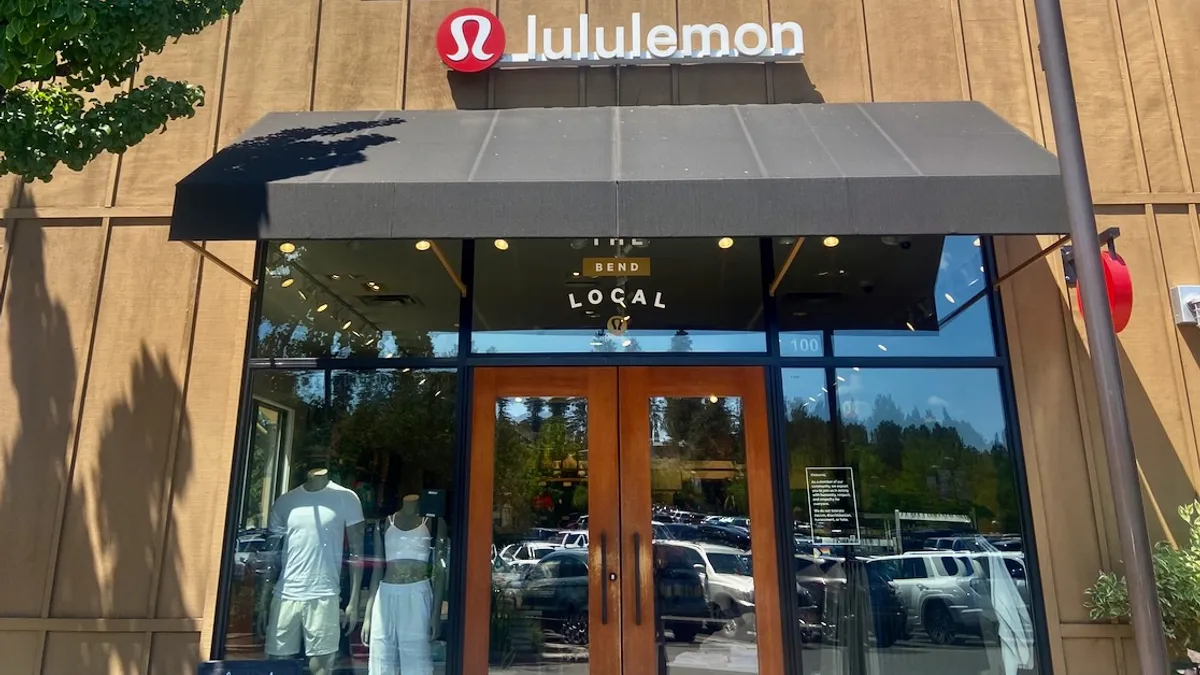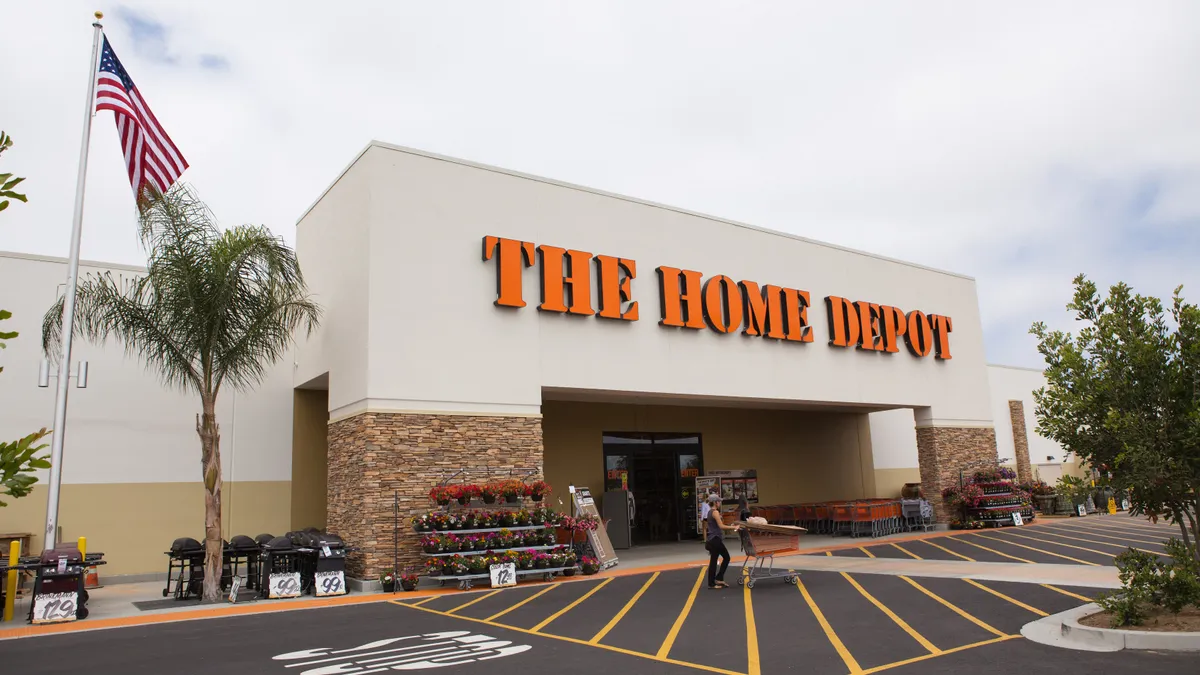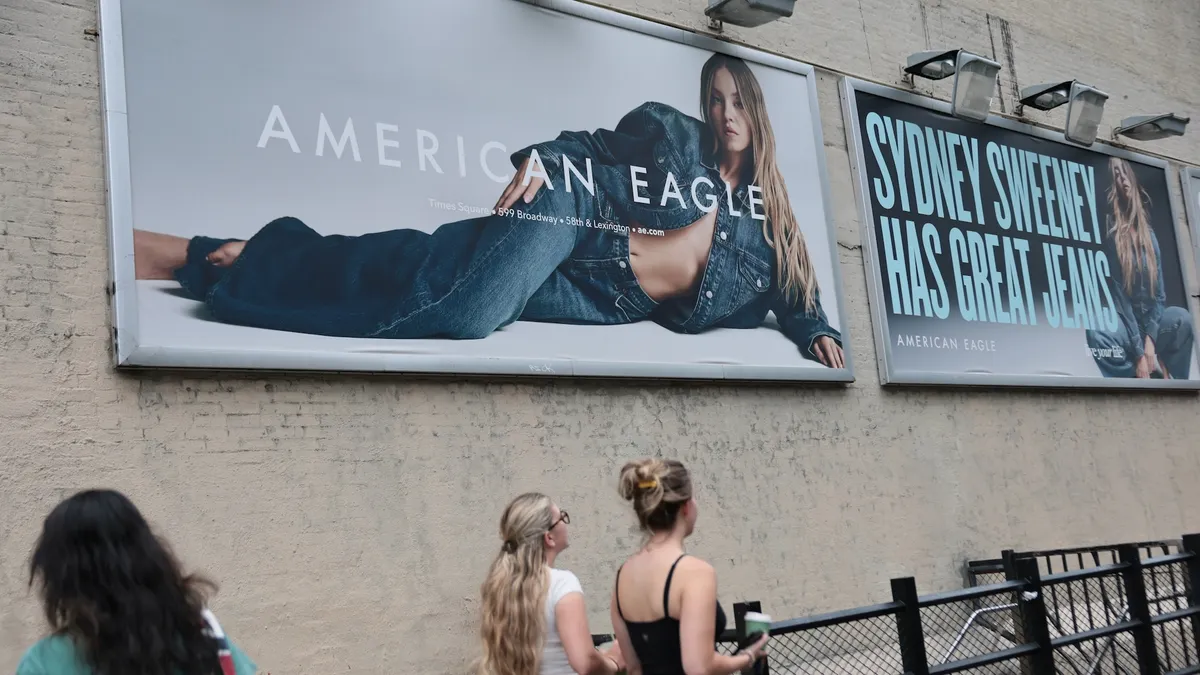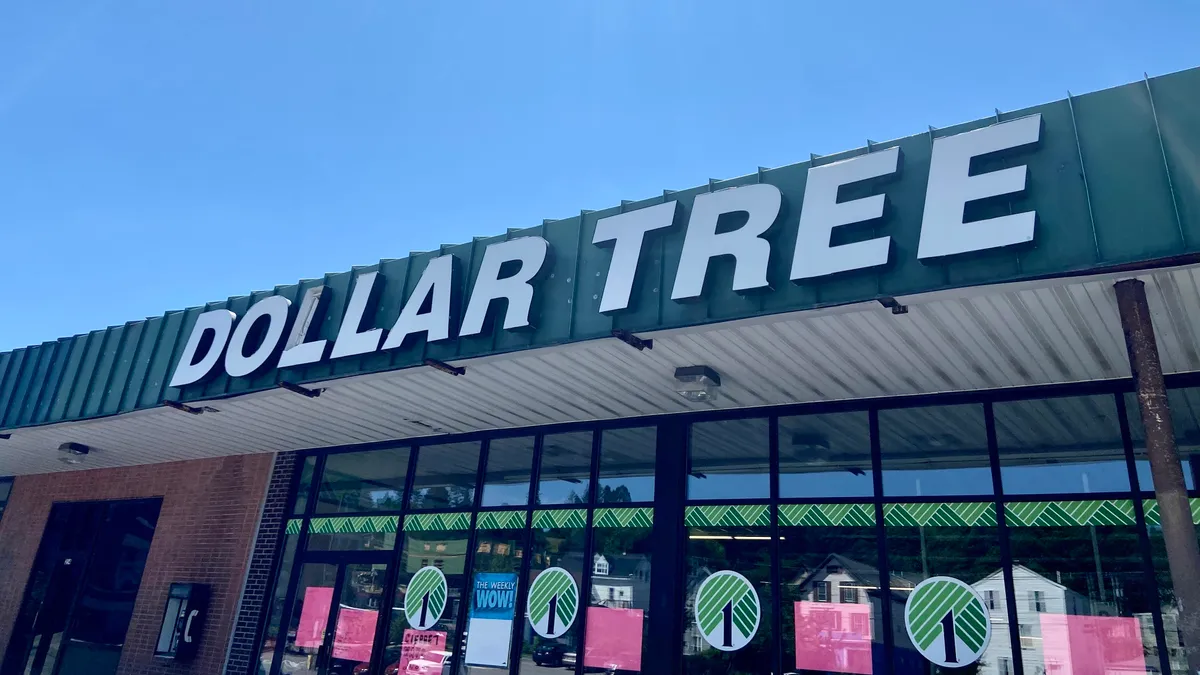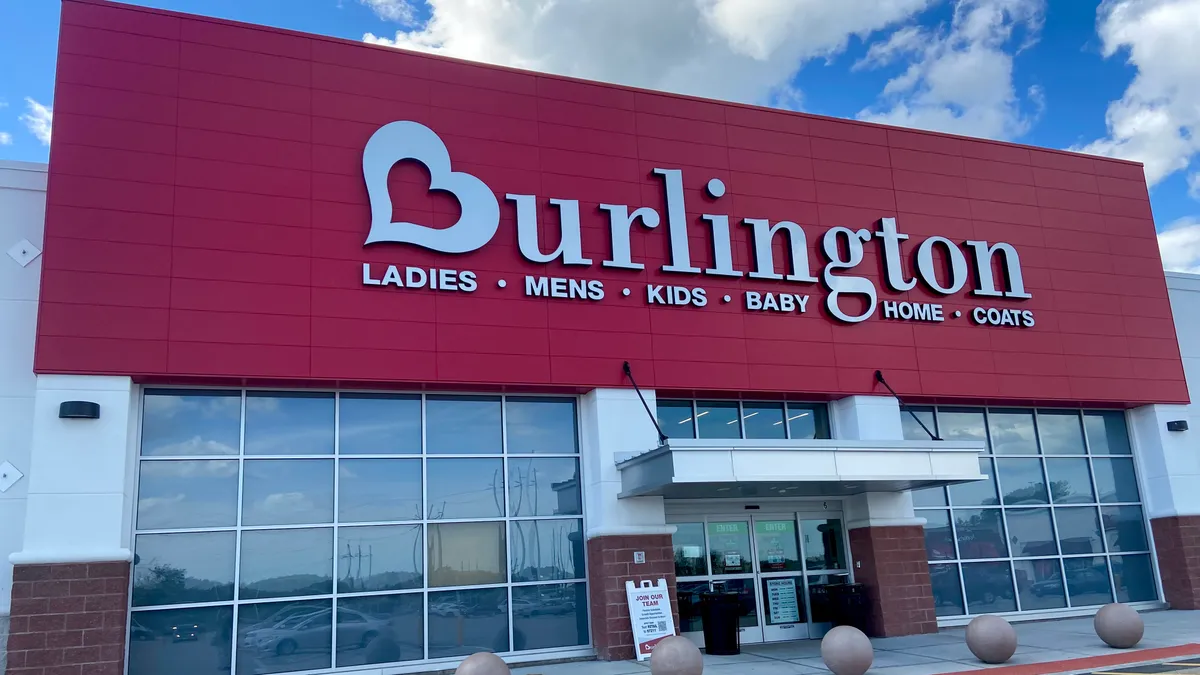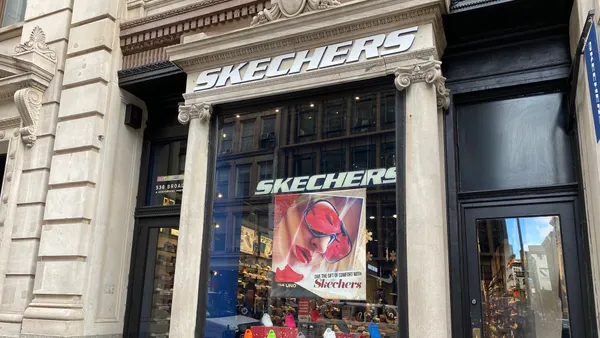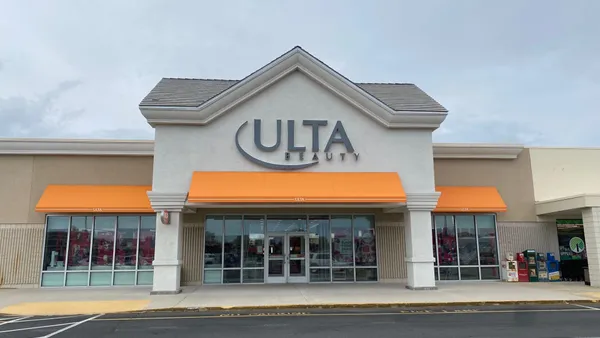L Brands was one of the first in line for cash.
On March 17, the day that it closed its entire store fleet, the owner of Victoria's Secret and Bath & Body Works said that the day before it drew down $950 million from a $1 billion secured revolving credit facility out of "an abundance of caution and as a proactive measure." The move left the company with $2 billion in total cash as it closed all its stores in response to the COVID-19 pandemic.
Many others followed. "It wasn't just retail," Reshmi Basu, restructuring editor with Debtwire, said in an interview. "Pretty much every company, whether it be a tech company, education, energy — if they had the ability to draw on their revolver, they did. It was across the board."
Apparel retail as an industry drew down $7.2 billion from revolvers during the closures, mostly in March, according to research from S&P Global Market Intelligence. Specialty retailers drew $5.4 billion, the department store sector drew $5.1 billion, online and direct-to-consumer retailers drew $2.3 billion, home goods retailers drew $1.7 billion and electronics retailers drew another $1.5 billion.
With the COVID-19 pandemic winding through the country and financial markets in free fall, it was simply the prudent, or "cautious," thing to do. Companies across sectors collectively drew down $252 billion — a quarter of a trillion dollars — from their revolvers between March 5 and April 30, according to S&P.
Later, many retailers that could issue new bonds did so. They also negotiated, when they could, deferments on their rent. They stretched out their payments to vendors, too. All of these moves fell under the simple goal of raising and preserving cash to stay afloat while stores were closed.
Obviously, all of those obligations have to be paid back someday (at least in theory). The retail world has been a harsh place for heavily indebted companies over the past four years. Now retailers across the board have new liabilities, taken on out of necessity during the closure period. And they're headed into a world of uncertain demand for their products as the coronavirus continues its spread through the U.S.
Bigger problems
The COVID-19 closures represent one of the reasons that businesses keep revolving loans and credit lines in their financial tool kits. Typically retailers use asset-based loan facilities to manage the seasonal swings in cash flows and inventory purchases, though they can be used for all manner of spending — store investments, payroll expenses, leveraged buyouts and so on. And they're there for emergencies: unplanned capital needs or cash shortfalls.
As retailers shut down their stores and braced for financial and economic uncertainty, cash became of supreme importance — more important than their profit-and-loss numbers, debt ratios, or any other financial metric. Nobody quite knew what the coming weeks or months would bring; they just knew they would be better equipped to weather it with cash.
Among those who drew on their available credit were companies that are now facing a possible bankruptcy. That list includes Ascena, RTW Retailwinds, J. Jill, Francesca's, Tailored Brands and others.
Sarah Wyeth, sector lead for S&P Global's retail and restaurant coverage, told Retail Dive in an interview that her team viewed the draws, as well as new debt issuance, as a positive for retailers' credit health as they happened. "The first risk we were looking at was liquidity," she said. "What was their cash flow burn?"
"What cash flow sources does each issuer have and do they have the liquidity to get through the shock of the shutdown? Despite the fact that it increased leverage, we looked at it more in terms of liquidity," Wyeth added. "If you don't have cash, if you can't pay your bills, you have a bigger problem than high leverage."
Defensive draws
The COVID-19 crisis hit the entire industry, all at once. The draws companies made were essentially a run on capital, with everybody rushing to tap their credit lines while they could.
Use of credit lines rose 1,020 basis points in the first quarter compared to the fourth quarter 2019, and rose 590 basis points year over year, according to the Secured Finance Network, a trade group for lenders, which described the increase as driven by "the defensive draws that borrowers began to make in March 2020."
For retailers, those draws were "a cushion, war chest, source of liquidity to run business during the shutdown," Bill Kearney, senior managing director with Encina Business Credit, said in an interview. "That's the difference between living and dying for some companies."
But for lenders, the draws ate into their cushions, a problem exacerbated as the collateral backing those loans — for retail ABLs, that's typically product inventory — became frozen in warehouses and closed stores. In some cases, that could mean a lender's cushion was in the negative. "From a lender's perspective, that's a bad scenario," Kearney said.
"What we experienced in late March, early April was unprecedented. What I hear now from banks, people drew down out of fear that banks would not have capital, that entire markets would freeze."

Cheryl Carner
Senior Managing Director, Crystal Financial
The draws also "took liquidity out of the system," creating some challenges for banks and other lenders, Kearney said. (It also ate into profits, revolvers being lower-margin vehicles for lenders, according to a Bloomberg report.) But the draws did not create the kind of systemic liquidity crunch that it did during the 2008 crisis. "Banks are much better capitalized today than they were 10 years ago," Kearney said.
"What we experienced in late March, early April was unprecedented," Cheryl Carner, senior managing director at Crystal Financial, said in an interview, adding that the concentration of draws made it a more severe run than the 2008 financial crisis. "What I hear now from banks, people drew down out of fear that banks would not have capital, that entire markets would freeze."
But the situation soon stabilized. The Federal Reserve System "played exactly the role it was supposed to play," Carner said. "The markets functioned like they were supposed to."
'There will be an impact'
The draws came first. But as life returned to the credit markets, other retailers raised cash by selling new bonds.
Nordstrom was among the first retail names to issue new debt as part of its cash-raising efforts. In mid-April, the luxury department store chain closed on $600 million in new secured notes as well as an amended revolving line of credit, which together the retailer said gave it "additional liquidity and flexibility in response to uncertainty related to the novel coronavirus (COVID-19)."
The debt offering brought in much-needed cash, but of course debt is never free. As Moody's downgraded Nordstrom's senior unsecured credit rating, at the time Nordstrom priced its new bonds, Moody's Vice President Christina Boni said in a statement that "the additional leverage and pledging certain personal property to the revolver and certain real estate to the proposed notes reduces its financial flexibility."
In the months since the discretionary retail world shuttered in response to the pandemic, appetite for retail debt has picked up, and other retailers have taken advantage of investor optimism. Macy's, Gap, L Brands and others have issued new bonds.
"For the retailers that had the luxury and opportunity to issue new debt, it provides them with more liquidity," Basu said. "So a lot of retailers when they can, issued new bonds or are trying to tap the capital markets."
For a period in June, investors were buying up bonds wherever they could find them. "It was as though COVID never hit," Basu said, pointing to L Brands' new notes, demand for which outstripped supply even though the retailer's Victoria's Secret unit has struggled for years. (Basu later said that markets had become volatile again, in tandem with the stock market at the time.)
"Abatements are a rare creature. I haven't seen any pure abatements."

Craig Solomon Ganz
Partner, Ballard Spahr
Along with the debt, retailers also put off their rent obligations to hold on to what liquidity they had and because stores had ceased all productivity. Across the world of real estate investment trusts (REITs), an average of 28.9% of April rent payments had been collected by late May, according to Jefferies analysts. Legal spats between major landlords and retailers, including Simon Property Group and Gap, and L Brands and SL Green Realty, among others, have made headlines. But far more common than lawsuits were quiet negotiations behind closed doors.
In most cases, missed rent was put off into the future, spread out over the remainder of this year or kicked into next year or the back end of the retailer's lease, or some other creative solution. But in all likelihood little if any of it was forgiven outright by landlords.
"Abatements are a rare creature," Craig Solomon Ganz, a partner with law firm Ballard Spahr, said in an interview. "I haven't seen any pure abatements." And for retailers already struggling, those obligations could be especially pronounced. "It's not a good solution for anyone for a tenant already drowning in debt to add debt to their balance sheet," Ganz said.
Whether rent is getting paid out later this year, in 2021, or over the life of the lease, that rent is "eventually a cash liability," Moody's Vice President Raya Sokolyanska said in an interview.
Vendor payments, as Sokolyanska points out, are another bill retailers put off as they tried to maintain their cash positions. "You can't extend those payments for much longer if you want to receive new shipments," she said.
As bills come due from the steps retailers took to control their cash burn, money is going to soon have to go back out the door. "Absolutely there will be an impact, " Sokolyanska added.
Road to repayment
In the best-case version of the future, retail sales rebound consistently throughout the year, bringing cash into retailers' coffers which they can use to pay down their credit draws, make interest on the new bonds they issued, and make rent and vendor payments to keep those crucial relationships running smoothly.
The reality is that, with a recession underway, the pandemic continuing its spread, and uncertainty in how consumers will respond to these twin threats over time, nobody really knows what will happen to retail sales in the course of the next year or two. Projection into the future requires large amounts of conjecture. And that uncertainty makes everything, including forecasting cash flows, an incredibly difficult and precarious task for retailers.
"There were certainly retailers in a weakened position to begin with," Seth Freeman, a senior managing director with B. Riley Financial's GlassRatner, said in an interview. "Then you have other retailers that were otherwise chugging along, and so there's retailers that may have had room to leverage up, that weren't necessarily in bad shape at the time. But now both kinds of retailers are facing some real unknowns in terms of ramping up, and what that's going to look like in terms of servicing this debt."
He added, "It seems to me they've all taken on this new burden, and different retailers have different exposure."
For those retailers that didn't use all the cash they drew from their credit facilities, and don't expect to need it in the near term, they may be able to pay it down as stores reopen. That amount would go back to the availability under the revolving loan or credit line, where it is a form of liquidity (as long as financial markets are stable).
Michaels, for example, drew $600 million down from its credit facility in March. In June, the crafting retailer paid back $300 million of that. Michaels said in a press release that it "expects to have sufficient liquidity to fund planned capital expenditures, working capital requirements, debt service requirements and anticipated growth for the foreseeable future."
But Kearney and others Retail Dive spoke with said companies in the industry for the most part haven't started paying down their draws yet. As Debtwire's Basu noted, some retailers may be holding on to the cash from their draws in case there's a second wave of the coronavirus that hits sales again.
Plenty of retailers are still likely burning cash, with sales down. S&P's Wyeth said that for retailers further down the ratings scale, "you've got issuers we're going to be less confident about their ability to just keep cash on their balance sheet." She added, "It's just the nature of weaker businesses that they're more likely to burn through cash at a higher rate."
Some draws may never be paid back. The Secured Finance Network said in a press release that it expects higher levels of loan write-offs in the coming quarters "as the impact of the COVID-19 pandemic appears in bank data."
For most, the debt retailers have racked up during the closure period won't lead directly to bankruptcies in the near term — that depends on maturity schedules and liquidity to make payments, and a host of other factors. "The incremental debt is not the driving factor" in distress and bankruptcy, Wyeth said. "The driving factor is earnings and revenue and cash flow."
Still, in recent years, heavy debt loads have been a terminal condition for some retailers. Interest payments suck up money that could go into a company's website, omnichannel services, store remodels or maintenance, or to keep employees on staff. Retail companies that have gone through leveraged buyouts by private equity firms, leaving them with large piles of debt on their books, make up an outsized share of retail bankruptcies. In the industry, margins are low, the world moves quickly, and the room for error is slim. It is not a friendly environment for highly leveraged companies.
Retailers with sterling financial profiles and healthy businesses likely will have no trouble paying down the liabilities they accrued during the shutdown period. But the weaker the company, the bigger the burden of the credit draws and other debt, as well as the deferred rent, vendor payments and all the other liabilities they took on so that they could stay in business during the closures.
Less liquidity?
There's the opposite risk as well for retailers in the near term: What if they can't get enough access to credit to meet their liquidity needs?
Going forward, retailers might have less access to cash from their revolvers and other asset-based loans. The ABL world is watching and waiting to see what happens to the value of collateral backing billions of dollars in loans. In retail, that collateral is largely made up of a retailer's inventory, which can be sold off in going-out-of-business sales to pay off an ABL should the company fail and be forced to close.
Over more than 20 years, liquidators built up mountains of data on going-out-of-business sales, making for precise value estimates on a retailer's inventory. That precision and predictability made ABLs a safe instrument for lenders in the retail world. No matter what happened to the company, ABL lenders almost always were repaid in full, as the availability of funds to retailers were based on the inventory's estimated value in a liquidation scenario.
As with everything else in the industry, the pandemic upended this by casting a cloud over liquidation value. Bankruptcies with going-out-of-business sales ongoing, including Pier 1 and Modell's, even paused the court process, and liquidation sales, altogether. Now, though, with stores reopening, more bankruptcies filed, and going-out-of-business sales starting to resume, the industry might start getting its first read on inventory liquidation values.
"Retail inventory does not get better sitting on shelves," Kearney said. "You're not going to buy a sweater in June or July. The question is, when you restart [going-out-of-business] sales, what happens?"
Should values prove less than what they were pre-pandemic, that could have the effect of reducing loan and credit line availability for scores of retailers. For those companies, lower collateral values for inventory could mean "less liquidity to run their business," Kearney said.
That could force retailers to look for alternative sources of capital — potentially more expensive and less flexible. Meanwhile, ABL terms on loans since the crisis have become more expensive and restrictive, according to Kearney. "The availability of capital is scarcer," he said. "It's just classic supply and demand."
The potential for multiple deadly waves of mass COVID-19 infections raises the stakes. Whether stores are forced to close or consumers stay at home of their own volition, the possibility of another across-the-board sales plummet would once again raise the urgent need for cash. If loan availability is down because collateral values have declined, that could be a big problem for some retailers.
"What happens if some of these retailers find themselves needing more money?" Freeman said. "They've already drawn their lines down. They don't have what can be deemed reliable [sales] projections. … They're just not going to have as much flexibility."



